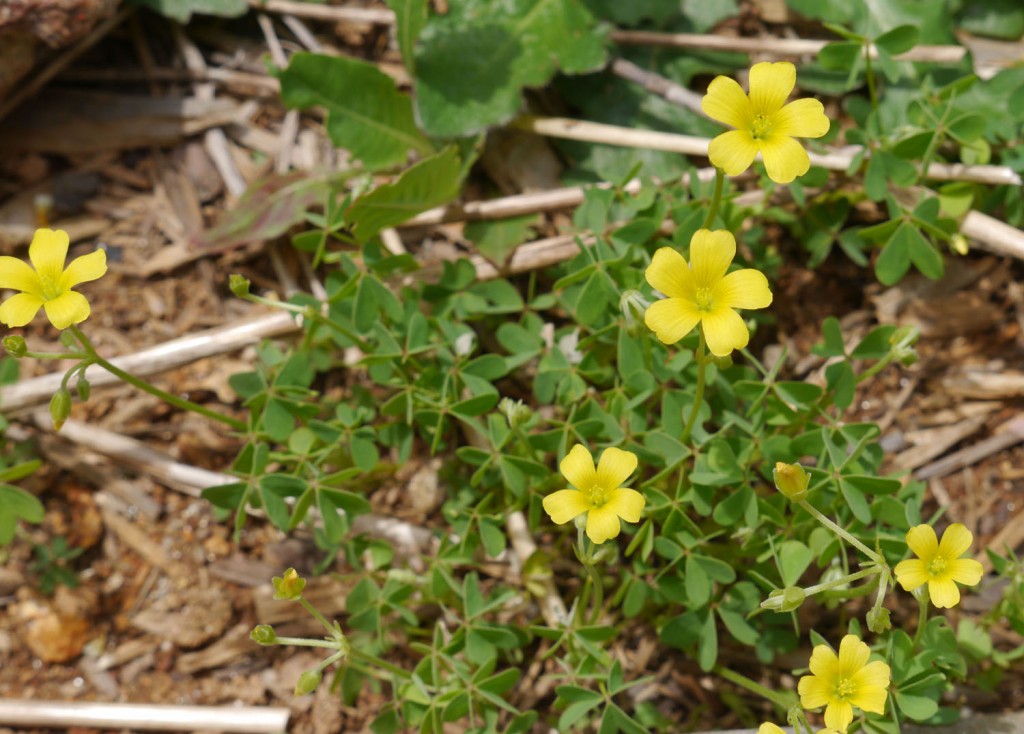 Is this a “three-leaved clover?” Or . . . wait, here’s another plant which might be clover:
Is this a “three-leaved clover?” Or . . . wait, here’s another plant which might be clover:
 Both plants have “three leaves.” Let’s look more closely at them. Here’s another example of the first type of plant:
Both plants have “three leaves.” Let’s look more closely at them. Here’s another example of the first type of plant:
 And another example of the second type of plant:
And another example of the second type of plant:
The yellow flower with the first plant is a strong clue that this is not the typical clover found in lawns. In fact, it is Yellow wood sorrel (Oxalis stricta) — not a clover at all. The second plant is White clover (Trifolium repens).
So how do we tell these plants apart — just from their leaves? Both plants have compound leaves consisting of three leaflets.
Each leaflet of Yellow wood sorrel is strongly heart-shaped. The leaflet also has a smooth margin.
Each leaflet of White clover is more rounded in shape. And, if you look very closely, you can see tiny “teeth” along the leaflet’s margin. A third distinctive characteristic of White clover’s leaflets is that they have a (full or partial) white chevron showing against the green background of the leaflet.
Of course, the easiest way to identify each of these plants is when they are blooming. Yellow wood sorrel has yellow flowers . . .
. . . while White clover has flowers which are white (with pink overtones).





